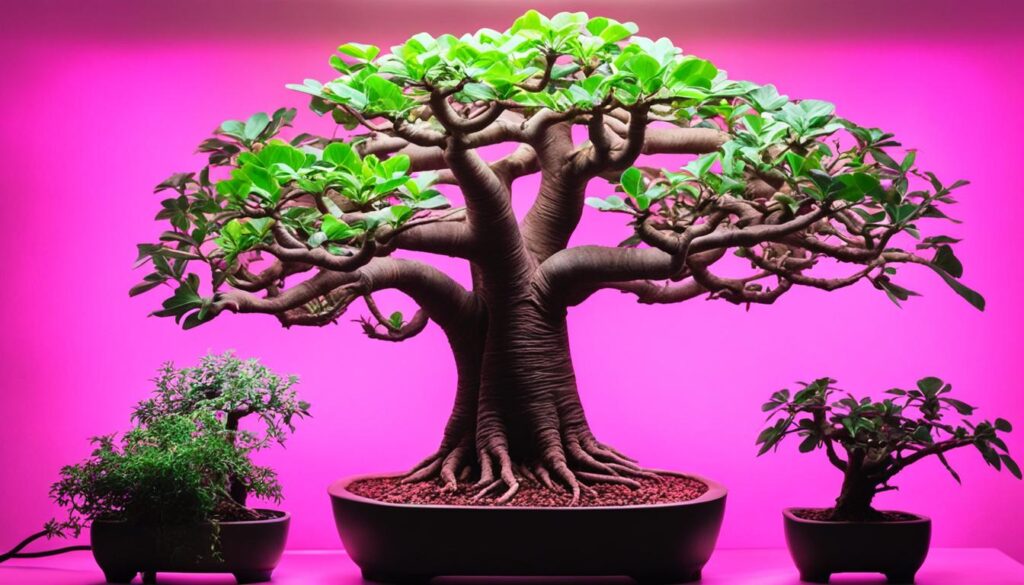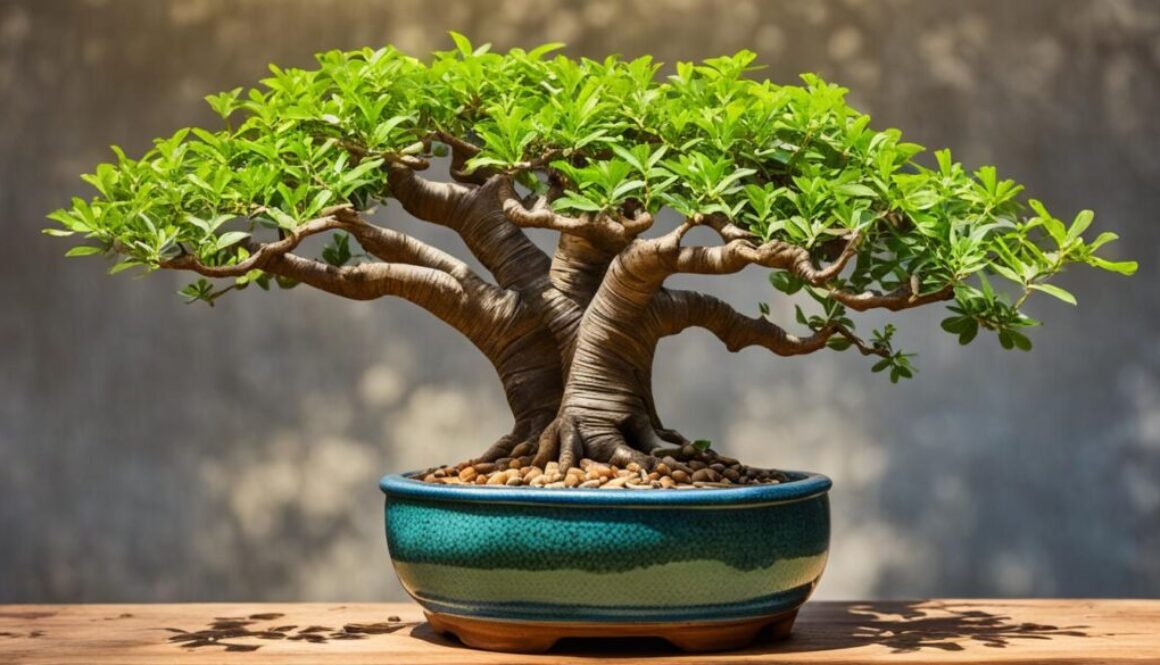Baobab Bonsai Tree Growing and Care Guide
If you’re a bonsai enthusiast looking to add something unique and fascinating to your collection, baobab bonsai trees are an excellent choice. With their distinct features and specific care requirements, they offer a rewarding and captivating experience for bonsai enthusiasts of all levels.
Baobab bonsai trees, also known as Adansonia digitata, are native to Africa and are known for their iconic swollen trunks and stunning canopy of foliage. Unlike traditional bonsai trees, baobabs exhibit remarkable adaptability to the art of bonsai cultivation, making them a captivating choice for enthusiasts seeking something extraordinary.
If you’re wondering how to grow baobab bonsai, this guide has got you covered. We’ll explore everything from plant care and maintenance to propagation and styling techniques. Whether you’re a beginner or an experienced bonsai cultivator, you’ll find valuable insights and practical tips to help you successfully nurture and cultivate your bonsai tree.
Understanding the Unique Requirements of Baobab Bonsai

Baobab bonsai trees have specific requirements that are crucial for their successful growth and development. To ensure the health and vitality of your plant, it’s important to understand and meet these unique needs.
Necessity of Warm Environments and Temperature Sensitivity
Baobab bonsai trees thrive in warm environments and are highly sensitive to cold temperatures. It is essential to provide them with a suitable climate to promote their growth. These bonsai trees should be protected when temperatures fall below 12°C/54°F. In colder regions, it is advisable to keep them indoors or provide additional insulation to shield them from the cold.
The Significance of Sunlight and Grow Lights
Adequate sunlight is crucial for the growth and overall well-being of baobab bonsai trees. They require a minimum of six hours of direct sunlight every day. However, in cases where natural sunlight is limited, the use of grow lights can be a beneficial alternative. Grow lights provide the necessary light spectrum for photosynthesis, ensuring that your bonsai receives the energy it needs to thrive.
Characteristics of Baobab Bonsai Dormancy
Understanding the dormancy patterns of baobab bonsai trees is crucial for their care and maintenance. These bonsai trees undergo a period of dormancy, where their growth significantly slows down. During this time, it’s important to reduce watering and avoid fertilizing. Baobab bonsai trees typically enter dormancy in the late fall or winter, and their growth resumes in the spring. By recognizing and respecting their natural dormancy cycle, you can provide optimal conditions for your plant’s long-term health and vitality.
| Requirement | Description |
|---|---|
| Warm Environments | Thrive in warm climates; sensitive to cold temperatures |
| Sunlight | Require a minimum of six hours of direct sunlight daily |
| Grow Lights | Beneficial in cases where natural sunlight is limited |
| Dormancy | Enter dormancy during late fall or winter; reduced watering and fertilization |
Mastering the Watering Techniques for Baobab Bonsai
Proper watering is essential for the health and vitality of baobab bonsai trees. These trees can store water in their trunks and only need to be watered about once a month during the growing season. However, during their dormancy period, they should not be watered at all. Overwatering can lead to root rot and ultimately harm the tree. Understanding the moisture needs of your plant and learning how to accurately gauge when to water is essential for their successful cultivation.
When it comes to baobab bonsai watering, there are a few key considerations to keep in mind:
- Frequency: Baobab bonsai trees only need to be watered about once a month during the growing season. This allows their trunks to naturally store and release water as needed.
- Dormancy: During the dormancy period, which typically occurs in the winter months, baobab bonsai should not be watered at all. This is because they are not actively growing and do not require as much moisture.
- Gauging Moisture: Accurately determining when to water baobab bonsai can be a bit tricky. One method is to check the moisture level of the soil by inserting your finger about an inch deep into the soil. If it feels dry, it’s time to water. However, it’s important to avoid overwatering, as this can lead to root rot. Err on the side of underwatering rather than overwatering.
By following these watering techniques, you can ensure that your baobab bonsai tree receives the right amount of moisture for optimal growth and health.
The Art and Science of Baobab Bonsai Fertilization
Fertilization plays a vital role in the growth and development of baobab bonsai trees. Selecting the appropriate fertilizer and establishing an optimal fertilization schedule are essential for promoting vigorous growth and overall health.
Selecting the Appropriate Fertilizer
When choosing a fertilizer for your plant, it’s important to consider the specific nutrient requirements of the tree. Opt for a balanced fertilizer that provides equal amounts of nitrogen (N), phosphorus (P), and potassium (K). A popular choice is a 20-20-20 fertilizer, which ensures a well-rounded nutrient supply.
Additionally, look for a fertilizer that contains essential micronutrients such as iron, manganese, and zinc. These micronutrients are crucial for the overall health and vitality of your bonsai tree.
Optimal Fertilization Schedule for Vigorous Growth
Establishing a proper fertilization schedule is essential for ensuring vigorous growth and preventing nutrient deficiencies or excesses. Here’s a general schedule to follow:
- Fertilize your plant tree during the growing season, which typically spans from spring to early fall.
- Apply fertilizer every 4-6 weeks, following the instructions provided by the manufacturer.
- During the winter dormancy period, refrain from fertilizing as the tree’s metabolic activity slows down.
Remember to adjust the fertilization schedule based on your specific plant’s needs and growth patterns.
| Fertilizer Type | Nitrogen (N) | Phosphorus (P) | Potassium (K) | Micronutrients |
|---|---|---|---|---|
| 0 | 20% | 20% | 20% | Contains essential micronutrients |
| Other balanced fertilizers | Varying percentages | Varying percentages | Varying percentages | Check the label for included micronutrients |
By selecting the appropriate fertilizer and adhering to an optimal fertilization schedule, your bonsai will receive the necessary nutrients to thrive and display healthy growth. Remember to monitor the tree’s response to fertilization and make adjustments as needed. With proper fertilization, your plant will flourish and bring you years of beauty and enjoyment.
Pruning and Styling Your Baobab Bonsai
Pruning and styling are essential for maintaining the health and beauty of your baobab bonsai tree. Through proper pruning, you can control the shape and size of the tree, while styling allows you to create unique and visually appealing designs.
When it comes to pruning baobab bonsai trees, the good news is that you can prune at any time of the year. However, it is best to focus on cutting back branches before new leaves appear. This helps maintain the overall structure of the tree and prevents excessive growth in certain areas. Trimming new shoots to manage their length is also a common practice in baobab bonsai pruning.
In addition to pruning, styling techniques such as wiring can be used to shape and position the branches of your baobab bonsai. Wiring allows for precise manipulation of the branches, creating elegant and harmonious designs. Be careful not to leave the wire on for too long to avoid wire scars.
When styling your baobab bonsai, consider the natural characteristics of the tree and aim to create a design that complements its unique features. You can experiment with different styles, such as formal upright, slanting, or cascade, to bring out the distinctive beauty of your baobab bonsai.
Expert Tip: Before pruning or styling your baobab bonsai, make sure you have the right tools, such as sharp pruning shears and bonsai wire. This will ensure clean cuts and minimize the risk of damage to the tree.
Remember, each baobab bonsai tree is unique, and as an artist, you have the opportunity to shape and guide its growth. Whether you prefer a classic form or a more creative design, pruning and styling techniques allow you to create a bonsai masterpiece that reflects your personal style and vision.
Best Practices for Repotting and Propagating Baobab Bonsai
Repotting and propagation are essential techniques to ensure the healthy growth and development of your baobab bonsai trees. Knowing when and how to safely repot your baobab bonsai is crucial for their continued well-being. Generally, you should repot your baobab bonsai every two to three years, or when you notice the roots circling the pot or becoming pot-bound. Late winter or early spring, before the tree enters its active growth phase, is the best time to repot.
To safely repot your baobab bonsai, gently remove the tree from its current pot, being careful not to damage the delicate roots. Trim any congested or excessively long roots and prune away any dead or unhealthy root parts. Choose a slightly larger pot that allows room for the roots to grow, and use a well-draining soil mix specifically formulated for bonsai trees. Place the tree in the new pot, making sure it is centered. Fill the pot with the soil mix, gently tapping it down to eliminate air pockets. Finally, water the tree thoroughly and place it in a location with appropriate sunlight.
Innovative Techniques for Propagating Baobab Bonsai
Expanding your baobab bonsai collection can be achieved through innovative propagation techniques. One method is propagating baobab bonsai from cuttings. Select a healthy branch and make a clean cut just below a leaf node. Remove the lower leaves, leaving only a few at the top. Dip the cut end in a rooting hormone and plant it in a well-draining soil mix. Keep the cutting in a warm and humid environment, and mist it regularly to promote root growth. With patience and care, the cutting will develop roots and can be transplanted into its own pot.
Another technique is starting baobab bonsai from seeds. Baobab seeds have a hard shell and may require scarification, which involves nicking or filing the seed coat, to help with germination. Soak the seeds in warm water for 24 hours, and then plant them in a well-draining soil mix. Keep the soil moist and place the pot in a warm and sunny location. Germination can take several weeks to months, but with proper care, you’ll soon have new baobab bonsai seedlings.
Understanding the Importance of Soil Mix and Drainage
The right soil mix and proper drainage are crucial for the health and vitality of your baobab bonsai trees. Baobab bonsai prefer well-draining soil that allows for adequate air circulation and prevents waterlogging. A suitable soil mix for baobab bonsai typically consists of a mixture of akadama, lava rock, and pumice, which provides good drainage and nutrient availability for the roots.
Drainage is essential to prevent root rot and other moisture-related problems. Ensure your pots have drainage holes to allow excess water to escape. When watering your baobab bonsai, water thoroughly but avoid overwatering. Allow the soil to dry between waterings to prevent root suffocation. Regularly check the moisture level by inserting your finger into the soil; if it feels dry up to your first knuckle, it’s time to water. Remember, overwatering is more harmful than underwatering for baobab bonsai.

Karen Phillips, Bonsai expert and blogger. Read more about me here

